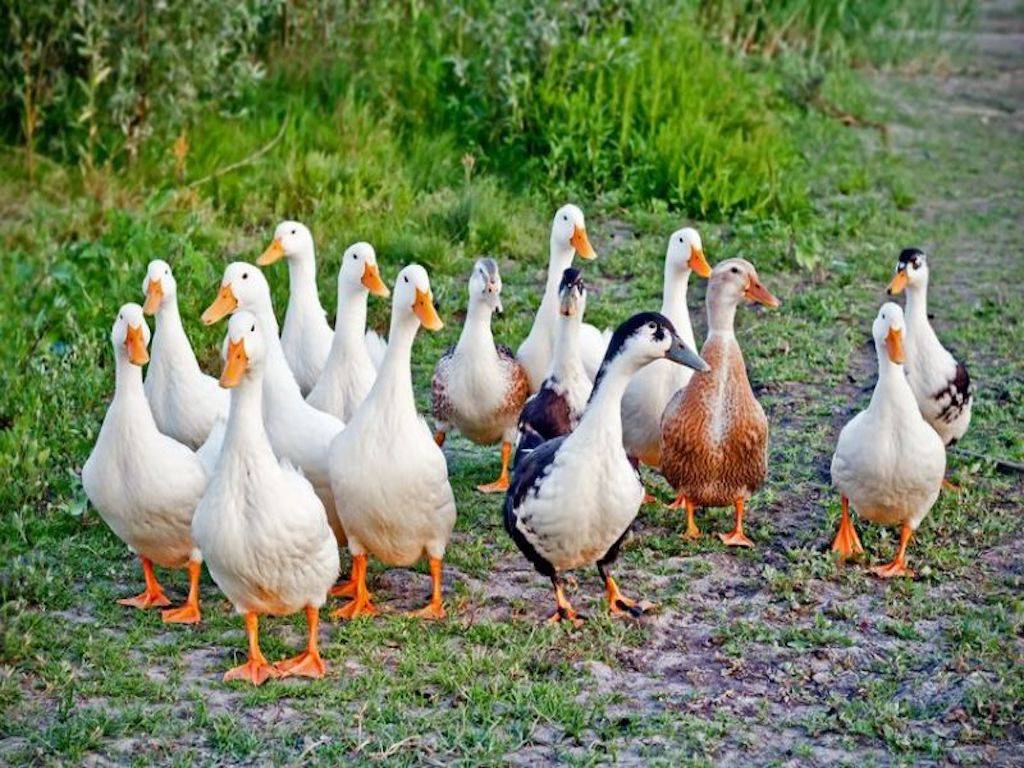
Duck Farming is a feasible business for marginal farmers that act as a good income source for them. Duck rearing is commercial and very easy to manage.
Benefits of duck rearing
-
Ducks are non-risky
-
Are resistant to several diseases
-
Life of egg production is more
-
Eggs are nutritious and earn more price in the market
-
Meat is known for its delicacy and people love it
-
Elaborate housing is not required
-
Kills pests such as snail, slugs etc.
Commercial duck farming is rising as this enterprise has a strong ability to raise revenue from egg processing. As ducks can feed on agro-industrial waste, swamps, and marshy fields, one can think about beginning commercial duck farming. The industry of duck farming is very lucrative and successful, since many duck breeds are available around the world.
Duck Breeds:
Some duck breeds are acceptable for the production of meat and some are for the production of eggs. There are also dual purpose duck breeds, though. Based on your business target, pick the right duck breed.
Breeds of Duck for Egg Production include Indian runner, White and Grayish Indian runner and Khaki Campbell ducks.
Breeds of Duck for meat production include Maskovi, Aylesbury, Sweden, Ruel Kagua and Peking ducks.
Breeds of Duck for both Meat and Eggs include Khaki Campbell ducks.
Production of Eggs:
The annual development rate of eggs varies according to breed. Average laying age for ducks is around 6 months. Indigenous duck breed produces eggs in the range of 100 to 130 in a year. Muscovy breed produces around 40 to 45 eggs in a year. Indian Runner breed lays around 250 eggs in a year. And Khakhi Campbell lays around 300 eggs in a year.
Ducks also produce eggs in their second year as well. Almost 95 percent eggs are laid in the morning time. Average lifespan for a duct is around 10 years, of which laying period is around 4 years. For commercial purposes, it is better that the eggs are laid in the morning hours between 6 to 9 AM.
Rearing Systems:
- Free Range System:
Under this method of rearing, bountiful space is provided to the ducklings for shelter. A total of 2,000 ducks can be reared per acre of land. Ducks mostly receive their food through foraging from fish, insects etc.
- Semi-Intensive System:
Under the semi-intensive method, birds are raised on deep litter in high shelter with floor space of 0.186 square metres and 0.929 square metres as outside run before they reach 16 weeks of age. V-shaped feeders can be used to feed wet mash. Allow 10 cm of feeding space on a hopper.
Local feeds are also used under the semi-intensive system. One third of the meal ration can be supplemented by cheaper household scrapes and fodder vegetable feeds, as available under local conditions.
- Intensive System:
Ducks are fed on thick litter in an intense regime until they reach the age of 16 weeks. A 0.279 sq. confined area A metre per bird is permitted. As the ducklings are 17 weeks old, about 0.465 square metres per duck are vaccinated against duck plaque and given more room.
Ducklings grow very rapidly and so need a ration rich in all nutrients. Up to 20 weeks of age, Khaki Campbell duck eats about 12.5 kg of feed. The intake then ranges from 120-170 gm per bird per day, depending on the rate of green production and availability.
The ratio between the starters, growers and layers should contain a proportion of 21, 18 and 18 proteins, respectively, with a metabolizable energy of 2850, 2900 kcal per kilo of feed.
Feeding:
Ducks are the most productive kind of birds that turn the fields' dropped seeds, larvae, plant materials into edible meat and eggs.
Ingredients:
|
Ingredients |
Between 0 to 1 month age |
For 1 month above age |
|
Jowar (Ground) |
35% |
30% |
|
Soybean cake |
25% |
30% |
|
Wheat (Ground) |
25% |
25% |
|
Rice bran (Deoiled) |
8% |
5% |
|
Fish meal |
5% |
5% |
|
Mineral Mixture |
2% |
2% |
|
Oyster shell (ground) |
– |
3% |
|
DL Methicinine |
50 grams |
50 grams |
|
Magnesium sulphate |
10 grams |
15 grams |
|
Copper sulphate |
1 gram |
1 gram |
|
Vitamins (A, B, D, K) |
25 grams |
25 grams |
Diseases and Control:
The list of several common duck diseases is here:
- Avian Cholera.
- Colibacillosis.
- Aspergillosis.
- Duck Virus hepatitis.
- Duck Plague.
- Botulism.
- Castor bean poisoning.
- Rapeseed meal.
- Riemerella anti pestiferous Infection
You should make sure that in feeding areas, there will be no toxic bean plants, no other food. For your duck, the castor beans are toxic. Ask the veterinarian specialist for signs and control measures.











